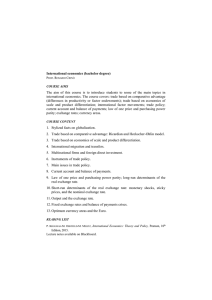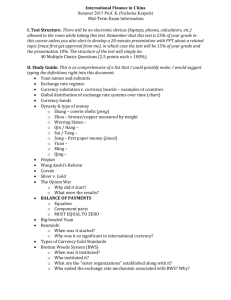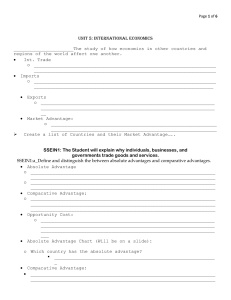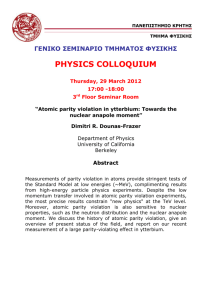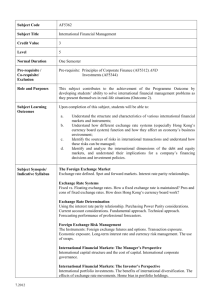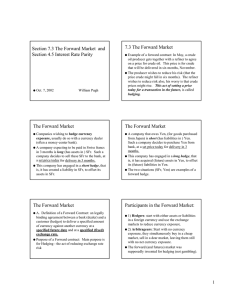Economics 137 Professor Craine Expected Interest rate Parity or the Forward Discount
advertisement
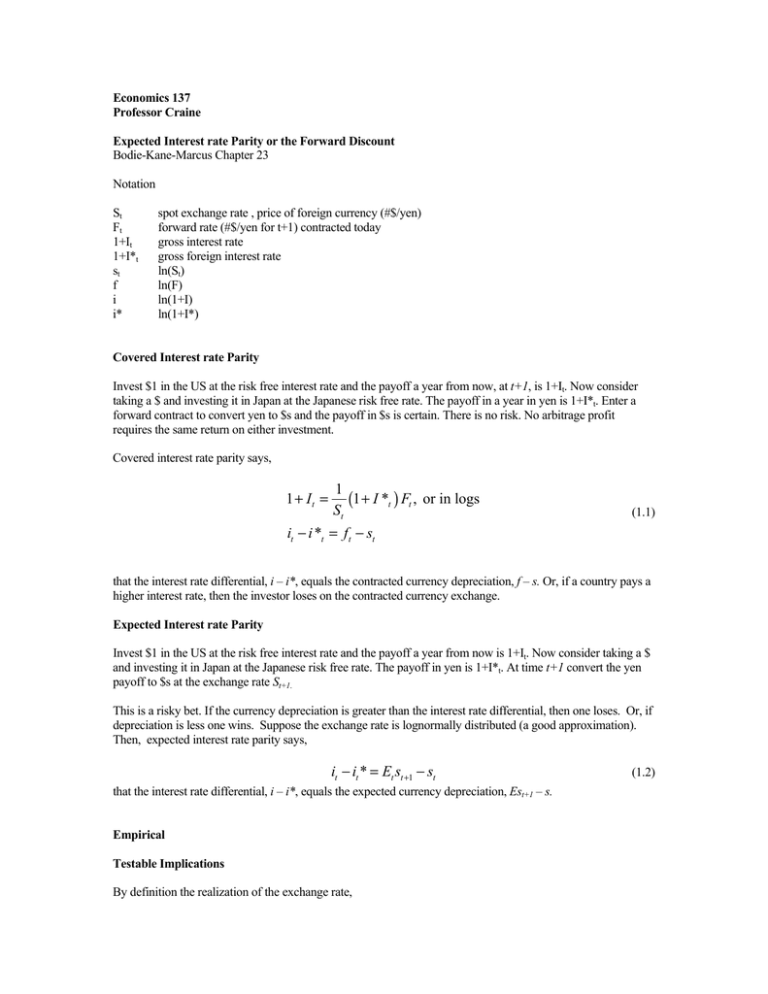
Economics 137 Professor Craine Expected Interest rate Parity or the Forward Discount Bodie-Kane-Marcus Chapter 23 Notation St Ft 1+It 1+I*t st f i i* spot exchange rate , price of foreign currency (#$/yen) forward rate (#$/yen for t+1) contracted today gross interest rate gross foreign interest rate ln(St) ln(F) ln(1+I) ln(1+I*) Covered Interest rate Parity Invest $1 in the US at the risk free interest rate and the payoff a year from now, at t+1, is 1+It. Now consider taking a $ and investing it in Japan at the Japanese risk free rate. The payoff in a year in yen is 1+I*t. Enter a forward contract to convert yen to $s and the payoff in $s is certain. There is no risk. No arbitrage profit requires the same return on either investment. Covered interest rate parity says, 1 + It = 1 (1 + I *t ) Ft , or in logs St (1.1) it − i *t = f t − st that the interest rate differential, i – i*, equals the contracted currency depreciation, f – s. Or, if a country pays a higher interest rate, then the investor loses on the contracted currency exchange. Expected Interest rate Parity Invest $1 in the US at the risk free interest rate and the payoff a year from now is 1+It. Now consider taking a $ and investing it in Japan at the Japanese risk free rate. The payoff in yen is 1+I*t. At time t+1 convert the yen payoff to $s at the exchange rate St+1. This is a risky bet. If the currency depreciation is greater than the interest rate differential, then one loses. Or, if depreciation is less one wins. Suppose the exchange rate is lognormally distributed (a good approximation). Then, expected interest rate parity says, it − it * = Et st +1 − st that the interest rate differential, i – i*, equals the expected currency depreciation, Est+1 – s. Empirical Testable Implications By definition the realization of the exchange rate, (1.2) st +1 = Et st +1 + et +1 (1.3) equals the conditional expectation plus an error that is uncorrelated with the conditioning information. Substitute the realization in the expected interest rate parity condition (1.3), st +1 − st = a + b(it − i *t ) + et +1 (1.4) If the expected interest rate parity model is correct, then a = 0, b =1, and the error is uncorrelated with the interests rates. Notice that covered interest rate parity allows one to substitute forward rates for the interest rate differential, st +1 − st = a + b( ft − st ) + et +1 (1.5) Project: Test the Expected Interest Rate Parity Model Get monthly data from for the US, Japan, and another country. I thought Global Financial Data had all the data, but I couldn’t find it today (and their documentation is terrible.) Datastream has the data. 1. 2. Test the model, ie run the regression. Calculate the excess return from borrowing in the low interest rate country and investing in the high interest rate country.



